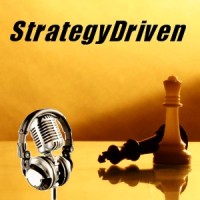Leadership Inspirations – Producing Happiness

William Ralph Inge (1860 – 1954)
English author, Anglican priest, Professor of Divinity at the University of Cambridge, and Dean of St Paul’s Cathedral

William Ralph Inge (1860 – 1954)
English author, Anglican priest, Professor of Divinity at the University of Cambridge, and Dean of St Paul’s Cathedral
Finding opportunity in the down economy
Pick any sector right now, and what do you see? People and businesses are looking for opportunities. What kinds of opportunities? Real estate investments, undervalued stocks, strategic partnerships, you name it. The one pervading message we’re hearing lately is that organizations are watching for the economic recovery to start soon and looking for ways to come out of this down cycle stronger than before.
One retail CTO summed it up well at a recent SAS event when he said, “We don’t want to just struggle through and be hanging by our fingertips when the economy recovers. We want to come out strong.” Thinking long-term has led this retailer’s CEO to investigate real estate purchases at lower rates and to buy up high-end equipment now while the prices are low.
Where can you find long-term strategies for your business? Consider these 11 ideas from the Radical Times Webcast series by SAS Marketing Director Jonathan Hornby:
1. Remember, recessions make us stronger. According to economist Carl Schramm, recessions are part of the normal cycle. They make us stronger and force us to concentrate on strengths. It may be survival of the fittest, but it is never too late to put your house in order.
2. Beware cascading consequences. Joel Barker, futurist and author, warns about unintended consequences. The moment a plan or initiative is executed, you get a ripple of cascading consequences – some good, others bad. Unfortunately, few organizations consider the ripple effects up front. A decision that delivers positive first-order consequences could very well lead to negative second- or third-order events.
3. Understand what creates value. Alarmingly, recession or not, many organizations destroy 400 percent of the previous year’s profit without even realizing it. Peter Turney, CEO of Cost Technology, suggests using activity-based management techniques to recognize which business activities and which customers are causing a drain on your bottom line. Once you know, rebalance or change your strategy to deliver optimum returns.
4. Improve productivity. According to productivity expert Tor Dahl, only 8 percent of what we do at work is deemed perfect from a productivity point of view. As Dahl puts it, there are various “logs” that stand between us and our objectives. Remove them and you will find more time to focus on innovation. Start by asking a simple question: What am I doing that no one in this organization should be doing?
5. Get strategic. Gabor George Burt encourages organizations to defy conventional wisdom, and then simultaneously pursue a differentiated strategy with lower costs. When done correctly, you move from a bloody red ocean of competition to a calm blue ocean of opportunity. As an example, look to the Nintendo Wii, a gaming platform that sought to attract 90 percent of the population instead of the 5 percent targeted by the traditional gaming community – all at a lower cost.
6. Innovate quickly. Joel Barker says you can innovate faster, cheaper and with less risk by developing innovations at the verge. To do this, combine two separate things to create a totally new offer that addresses an unmet need. The gift bag, which combines brown bags and gift wrap, is a great example. There are probably millions of other combinations waiting to be discovered.
7. Innovate constantly. No innovation lasts forever, says author and business advisor Geoffrey Moore. You have to understand the innovation life cycle. It starts by defining your company’s core and context – core being what truly differentiates you. With that understanding, focus on how you will continuously recycle resources from invention to deployment, management, offloading and back.
8. Be extraordinary. Kevin Freiberg has discovered that ordinary people can achieve extraordinary results. It starts by creating a culture that encourages employees to do what’s right for the customer. For one employee at Wegmans, it was about challenging what was on offer in his deli. For Southwest Airlines, it was about how they could maintain the current schedule with fewer planes.
9. Keep it simple. Author Mark Thompson would encourage you to go back to basics and give customers just what they want: simple offers that exceed expectations. For example, one-click access to thousands of mutual funds, or exceptional service for the price paid. When setting expectations, always under-commit and over-deliver.
10. Focus on return on customer. Your customers are a finite resource, says Martha Rogers, Founding Partner of Peppers & Rogers Group. If you budget and reward employees based on the long-term value of customers, you will protect your organization today and well into the future. One Canadian bank applied this thinking to bounced checks. Instead of charging “good” customers to meet fee income targets, they sent notes asking them to deposit additional funds. The propensity for that customer to do business with them in the future went through the roof.
11. Lead to breed success. According to entrepreneur Gary Hoover, there are eight keys to building success, starting with a leader’s curiosity. Study history; few ideas are truly new. Look to the founding era of your industry and identify best practices that became too expensive to maintain during the ‘60s and ‘70s. Technology can probably breathe new life into them.
This article was republished with the permission of sascom Magazine.
About the Author


Special Edition 54 – An Interview with Gail Martin, author of 30 Days to Social Media Success explores approaches to effective business marketing using social media outlets such as Twitter, LinkedIn, Facebook, and blogging; marketing that drives traffic and ultimately results in increased sales. During our discussion, Gail Martin, author of 30 Days to Social Media Success: The 30 Day Results Guide to Making the Most of Twitter, Blogging, LinkedIn, and Facebook, share with us her insights, approaches, and real-world experiences regarding:

Additional Information
In addition to the incredible insights Gail shares in 30 Days to Social Media Success and this special edition podcast are the resources accessible from her website, www.GailMartinMarketing.com. Gail’s book, 30 Days to Social Media Success
, can be purchased by clicking here
.
Final Request…
The strength of our community grows with the additional insights brought by our expanding member base. Please consider rating us on iTunes by clicking here. Rating the StrategyDriven Podcast and providing your comments online improves our ranking and helps us attract new listeners which, in turn, helps us grow our community.
Thank you again for listening to the StrategyDriven Podcast!
About the Authors

, is a marketing expert and international speaker, and the owner of DreamSpinner Communications. She is the ‘Get Results Resource’ for marketing that works; helping small and start-up businesses, consultants, coaches, authors, and solo professionals succeed through affordable publicity. To read Gail’s complete biography, click here.
Podcast: Play in new window | Download (Duration: 31:36 — 43.4MB)
Subscribe: RSS
Einstein used to say that when he’d hit an impasse on a problem, he’d go sailing – and the answer would often come to him on the water.
Hi there! This article is available for free. Login or register as a StrategyDriven Personal Business Advisor Self-Guided Client by:
Subscribing to the Self Guided Program - It's Free!
About the Author

Too often, creation and maintenance of organizational performance measures becomes an administrative exercise accompanied by lifeless, mundane monthly review meetings. Real ownership of a performance measure means an individual is not only accountable for the performance indicated but is dedicated to improving that performance over time. Such ownership seldom exists when performance measures are assigned based on what appears to be a reasonable or logical association. Rather, true ownership occurs when performance measure inputs are assessed and responsibility and accountability deliberately assigned to the individual or work group whose actions and decisions most significantly affect the indicated performance. And as all accountabilities, ownership of performance measures should be documented and communicated to the respective owners.
Hi there! Gain access to this article with a StrategyDriven Insights Library – Total Access subscription or buy access to the article itself.
| Subscribe to the StrategyDriven Insights Library
Sign-up now for your StrategyDriven Insights Library – Total Access subscription for as low as $15 / month (paid annually). Not sure? Click here to learn more. |
Buy the Article
Don’t need a subscription? Buy access to Organizational Performance Measures Best Practice 15 – Map Performance Measure Ownership for just $2! |
